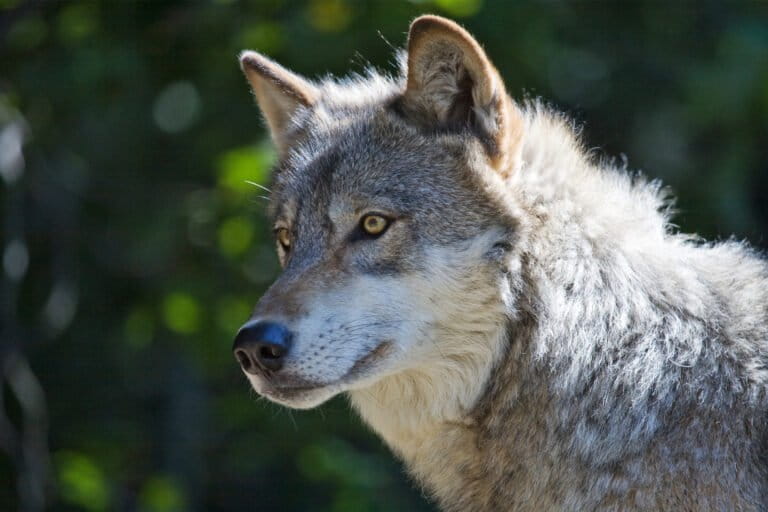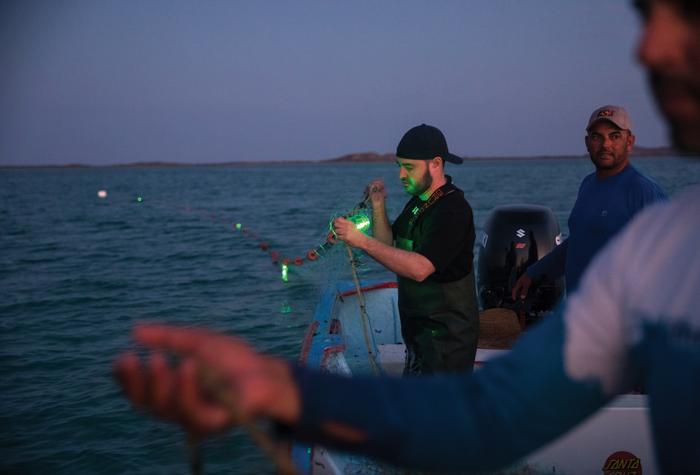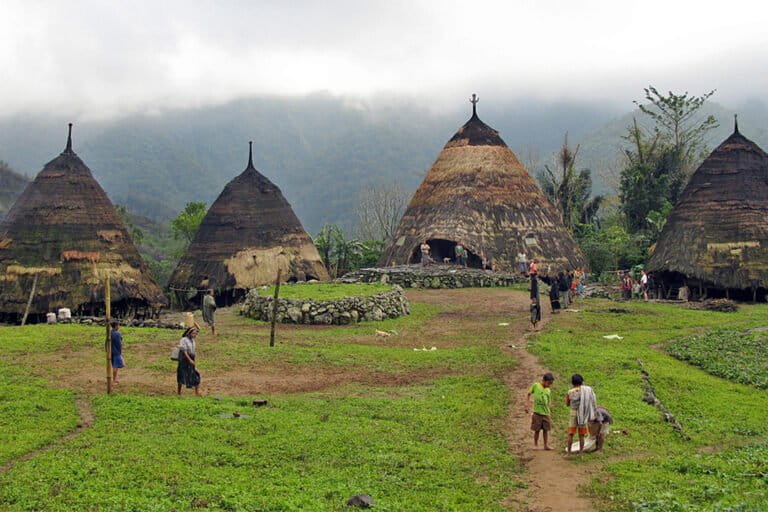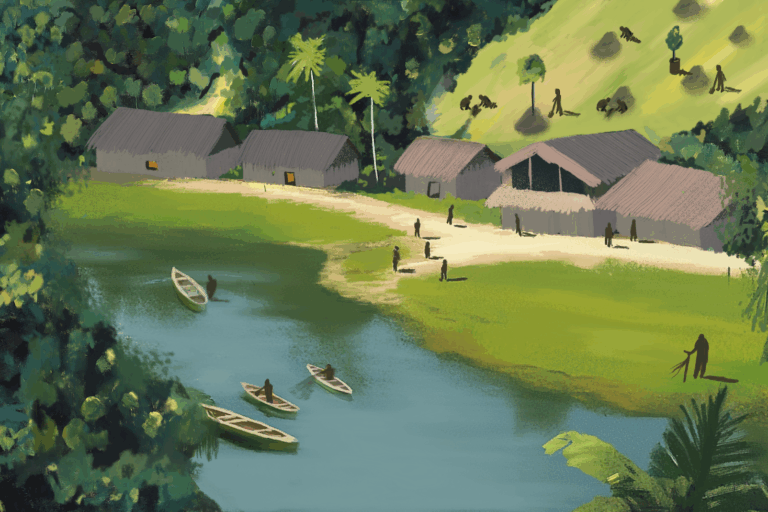- A new study suggests that fires on remote islands in southwest Australia pose a rising threat to short-tailed shearwaters and other seabirds as climate change creates hotter and drier conditions.
- In 2021, a research team led by Jennifer Lavers surveyed an island in Western Australia’s Recherche Archipelago a year after a fire event, and found little evidence that short-tailed shearwaters had successfully bred after the fire, ignited by a lightning strike, had swept over most of the island.
- Lavers and her research team suggest that Indigenous-led methods of controlled burning could help reduce the risk of catastrophic fires that would endanger seabirds.
- However, a seabird and island expert not connected with the study disagrees that fire currently poses a major threat, since seabirds have been known to rebound from fires, even after the loss of their fledglings and burrows.
For years, seabird ecologist Jennifer Lavers longed to survey the colonies of short-tailed shearwaters on Figure of Eight Island off the coast of Western Australia. She’d identified this remote island as the westernmost breeding spot for the species, and one of only six islands in the entire Recherche Archipelago that the species chose to inhabit.
In February 2020, a lightning strike ignited a fire on Figure of Eight Island, but no one seemed to know how bad the damage was. A year later, Lavers went to investigate. When she and a team of researchers steered their boat toward the shore, they saw that the fire had swept the island. Lavers said the terrain reminded her of a “moonscape.”
“If you looked at the neighboring islands, and then you looked at Figure of Eight, you could see right away that something was very, very different,” Lavers, a research scientist at the Institute for Marine and Antarctic Studies, told Mongabay. “The island was brownish, blackish gray, and [most] of the green vegetation had essentially been removed except for a couple of little patches.”
The baseline population of short-tailed shearwaters (Ardenna tenuirostris) on Figure of Eight Island before the fire is uncertain. A recent paper, with Lavers as lead author, suggests that “thousands” of seabirds may have once lived here, although this assumption is based on survey data from 40-80 years ago. Nonetheless, Lavers and her co-authors assume the fire would have impacted “significant numbers of shearwater chicks and adults.”
The visit to Figure of Eight Island coincided with fledgling season, a time when shearwater burrows should be filled with fattened, fluffy chicks poking their heads out as they prepare to take their first flights. But the researchers mostly found empty burrows, many of which had collapsed due to dry soil and a loss of vegetation.
“There were a couple of little pockets where there were some divots, and a couple of residual burrow holes,” Lavers said. “I was dead set convinced that they were all going to be abandoned and vacant, and we would definitely not find any birds in them.”
They did find one live chick. The team also identified a handful of burrows that might have been recently occupied, but without chicks in them. Based on these observations and the limited historical data, the researchers estimated that burrow density on the island was at 25% of what it had been before the fire.
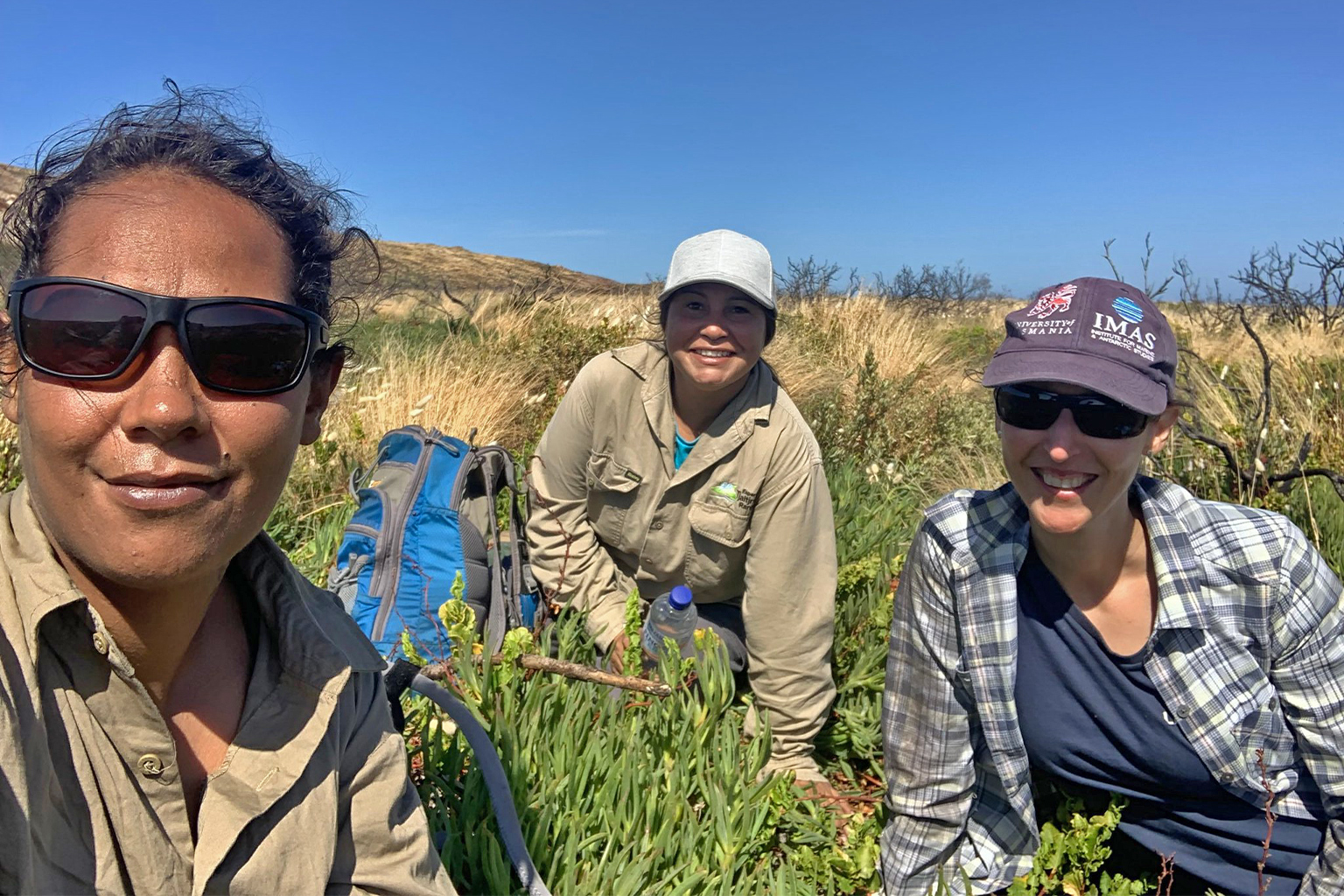
Island fires a new threat to seabirds?
Seabirds are one of the most threatened bird groups, according to a 2019 global assessment. Of the 359 known seabird species, it’s estimated that 31% are globally threatened with extinction, 11% are near threatened, and about half of all seabirds have declining population trends, the assessment says.
Seabird species face many dangers: invasive species, bycatch and overfishing, hunting, and climate change. Shearwaters in particular also commonly mistake plastic for food, a deadly error; previous research led by Lavers found that adult shearwaters unwittingly fill their fledglings’ stomachs with plastic as they try to fatten them up for flight. Shearwaters are also often hit by cars whenever colonies are located close to roads.
Now Lavers points to a new hazard, suggesting that fires on small islands, such as those found off Western Australia, could be a rising threat as climate change accelerates, but one that hasn’t been fully considered, possibly due to the difficulties of monitoring species on remote, hard-to-reach islands.
“There are multiple pressures on all of these different species, but bushfires [weren’t] one that we were thinking about,” Lavers said.
While Lavers’ study is one of the first to assess climate-driven fire risk to seabird colonies, older studies have looked at the threat of island fires to seabird species. A 1999 study, for instance, examined the impacts of wildfires — most of which were intentionally or accidentally lit by people — on seabirds nesting on Tasmania’s islands, noting that seabirds are particularly vulnerable to fires since they have highly synchronized breeding habits. Notable examples included a fire on Tasmania’s Albatross Island in 1982 that incinerated about 900 short-tailed shearwater chicks, and a fire on Cat Island in 1984 that destroyed an entire colony of shearwaters because adults were incubating eggs at the time of the blaze.
The lead author of the 1999 study, seabird expert Nigel Brothers, who was not involved in the new study, said that while education has helped minimize incidents of people intentionally or accidentally lighting island fires, climate change is now adding to fire risk.


“All one can conclude is that fire risk is all set to increase significantly because drier conditions and incidence of dry lightning strikes seem to be on the rise, if the Southern Australia breeding islands are any indication,” Brothers told Mongabay in an email. “The burrowing environment is particularly susceptible to more frequent or prolonged dry periods and then, at great risk, with likelihood of complete loss of peat type (burnable) soils.”
According to a 2012 management plan published by the Western Australia state government, the islands in the Recherche Archipelago are less fire prone than the mainland, but bushfire events — usually as a result of a lightning strike — are expected on one of the 105 islands every one to two years. But Lavers says the fire risk on the islands is likely much higher now due to the deteriorating state of the global climate, especially since this part of Australia has been identified as a “global drying hotspot” due to an ongoing trend toward decreasing rainfall and increasing heat waves.
While Australia’s hot, dry climate creates ideal conditions for fire, the rest of the world isn’t immune. A report by the U.N. Environment Programme (UNEP) and GRID-Arendal, a science communications nonprofit, estimates that the number of global fire events will increase by 50% by 2100 if governments don’t take immediate action on climate change.
The growing risk of fires could endanger some species of seabirds: If a fire ignites during nesting season, Lavers said, adults and fledglings alike may not know how to respond in a self-preserving way.
“Shearwater populations didn’t evolve in the presence of fire, so the smell of smoke, the heat, none of those things are going to be signals that they’re going to recognize,” she said.
However, Lavers added it’s currently not clear if fire events like the one on Figure of Eight will have an enduring impact on the population of short-tailed shearwaters, whose conservation status is currently classified as being of “least concern” by the IUCN, the global wildlife conservation authority. There’s also no information about how such fires would impact other seabird species that inhabit the Recherche Archipelago, such as great-winged petrels (Pterodroma macroptera), little penguins (Eudyptula minor), and near-threatened flesh-footed shearwaters (Ardenna carneipes).
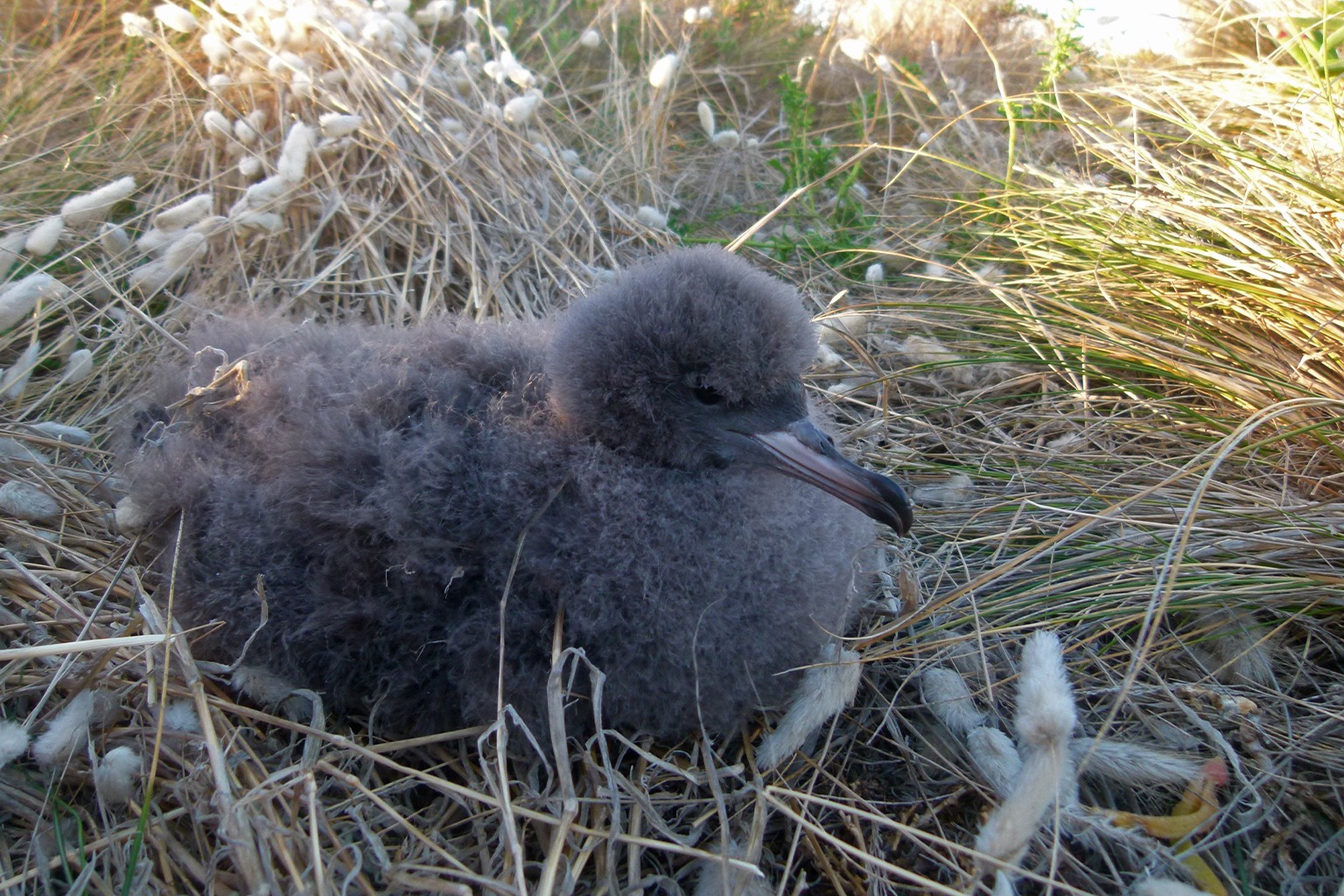
‘Managing country with fire’
The study offers a potential way to mitigate fire risk on islands occupied by seabirds: cultural burning, an Indigenous-led method of burning that aims to reduce the risk of catastrophic fires.
“The intent is the empowered knowledge from our Elders that managing country with fire is a primary method to maintain the health of bush and wildlife,” David Guilfoyle, study co-author and an archaeologist who works in Indigenous communities, told Mongabay in an email. “It’s a nurturing method, developed from a sophisticated cultural knowledge system [but] that has been neglected by many land management projects.”
According to Guilfoyle, controlled cultural burning could protect seabird colonies since it would take place on a small scale during the cool season and follow a mosaic approach. The burning would specifically target “drought-stressed, thick vegetation” and establish a “buffer” in case a seabird island was struck again by dry lightning.
Jennell Reynolds, a senior member of the Tjaltjraak Rangers, a group of Indigenous stewards who assisted Lavers and her team gather data, said cultural burning hasn’t been done yet on the islands, but that many would like to see it start. However, the Department of Fire and Emergency Services (DFES), the government agency that currently conducts controlled burns in Australia, would need to give its permission, Reynolds added.
“If we could, we would do it straightaway, but obviously working with other partners in that space, our hands are tied until we come to an agreement on how it could be done. And obviously, we’ve got to put up the argument that it needs to be done,” Reynolds told Mongabay in May.
Reynolds added that the islands in the Recherche Archipelago are currently experiencing extremely dry conditions: “It’ll go up [in a blaze] as soon as lightning strikes or someone accesses that island and drops a cigarette.”
Guilfoyle said that Indigenous rangers already use cultural burning to protect seabirds on Cape Barren Island in Tasmania.

‘Timing is everything’
Nicholas Carlile, an Australian island and seabird ecologist and secretary for the Australasian Seabird Group, who was not involved in this study, acknowledged that active fires near a nesting colony could directly impact adults and fledglings.
However, he said that “timing is everything,” noting that an island fire would be the most destructive to seabird populations when adults are incubating their eggs, and slightly less destructive if it’s only the fledglings that are affected. He added that seabird populations are known to come back after a fire even after the loss of fledglings and the collapse of their burrows. Consequently, he said he doesn’t consider fires to be a “major threat” to seabirds.
Carlile also questioned the accuracy of the study’s findings since it lacks a pre-fire survey and relies on previous surveys dating back 40 years.
“[Short-tailed shearwaters] have undergone significant impacts across their range to breeding season since 2013, with a major die-off at the beginning of that season from birds returning from winter migration to the Northern Hemisphere,” Carlile told Mongabay in an emailed statement. “Figure of Eight Island is at the extreme of their western distribution.” The colony has also likely “shrunk and is close to abandonment by this species” since the last survey was conducted 40 years ago, he said.
Carlile said other climate change impacts pose more significant threats to seabirds, including the diminishment of prey and the loss of habitat like sea ice. He said he’s also concerned about the development of offshore wind farms, including one being proposed off the east coast of Australia in the state of New South Wales (NSW).
“There is emerging data that seabirds traversing these farms in high winds … will be brought into the blade sweep of these units,” he said. “All of the 18-24 million short-tailed shearwaters (breeders and pre-breeders) fly down past the coastal edge of NSW every austral spring.”
Still, Lavers said the fire risk must be carefully monitored as the world gets hotter, drier and stormier. She and her research team already returned to Figure of Eight Island this year to conduct additional surveys, and they plan to do more in the future so they can understand if, and how, shearwaters recover from fire events like the one in 2020.
She said she often thinks back to the 2012 management plan published by the Western Australia government: “One island burning every second year in a report that is already 10 plus years old? In a warming hotspot for the nation? Yeah, we need to be talking about this.”
Banner image: The flesh-footed shearwater (Ardenna carneipes) is near-threatened according to the IUCN Red List. Image by Ed Dunens via Flickr (CC BY 2.0).
Citations:
Lavers, J. L., Carey, G. R., Guilfoyle, D. R., & Reynolds, R. (2022). Impact of bushfires on seabird breeding islands in Southwest Australia: A case study for developing a community-based model in adaptive management. Human Ecology. doi:10.1007/s10745-022-00338-0
Dias, M. P., Martin, R., Pearmain, E. J., Burfield, I. J., Small, C., Phillips, R. A., … Croxall, J. P. (2019). Threats to seabirds: A global assessment. Biological Conservation, 237, 525-537. doi:10.1016/j.biocon.2019.06.033
Lavers, J. L., Bond, A. L., & Hutton, I. (2014). Plastic ingestion by flesh-footed shearwaters (Puffinus carneipes): Implications for fledgling body condition and the accumulation of plastic-derived chemicals. Environmental Pollution, 187, 124-129. doi:10.1016/j.envpol.2013.12.020
Wilcox, C., Carlile, N., Hardesty, B. D., & Reid, T. (2021). Assessing multiple threats to seabird populations using flesh-footed shearwaters Ardenna carneipes on Lord Howe Island, Australia as case study. Scientific Reports, 11(1). doi:10.1038/s41598-021-86702-4
Brothers, N., & Harris, S. (1999). The effects of fire on burrow-nesting seabirds particularly short-tailed shearwaters (Puffinus tenuirostris) and their habitat in Tasmania. Papers and Proceedings of the Royal Society of Tasmania, 133(1), 15-22. doi:10.26749/rstpp.133.1.15
Elizabeth Claire Alberts is a staff writer for Mongabay. Follow her on Twitter @ECAlberts.
FEEDBACK: Use this form to send a message to the author of this post. If you want to post a public comment, you can do that at the bottom of the page.








